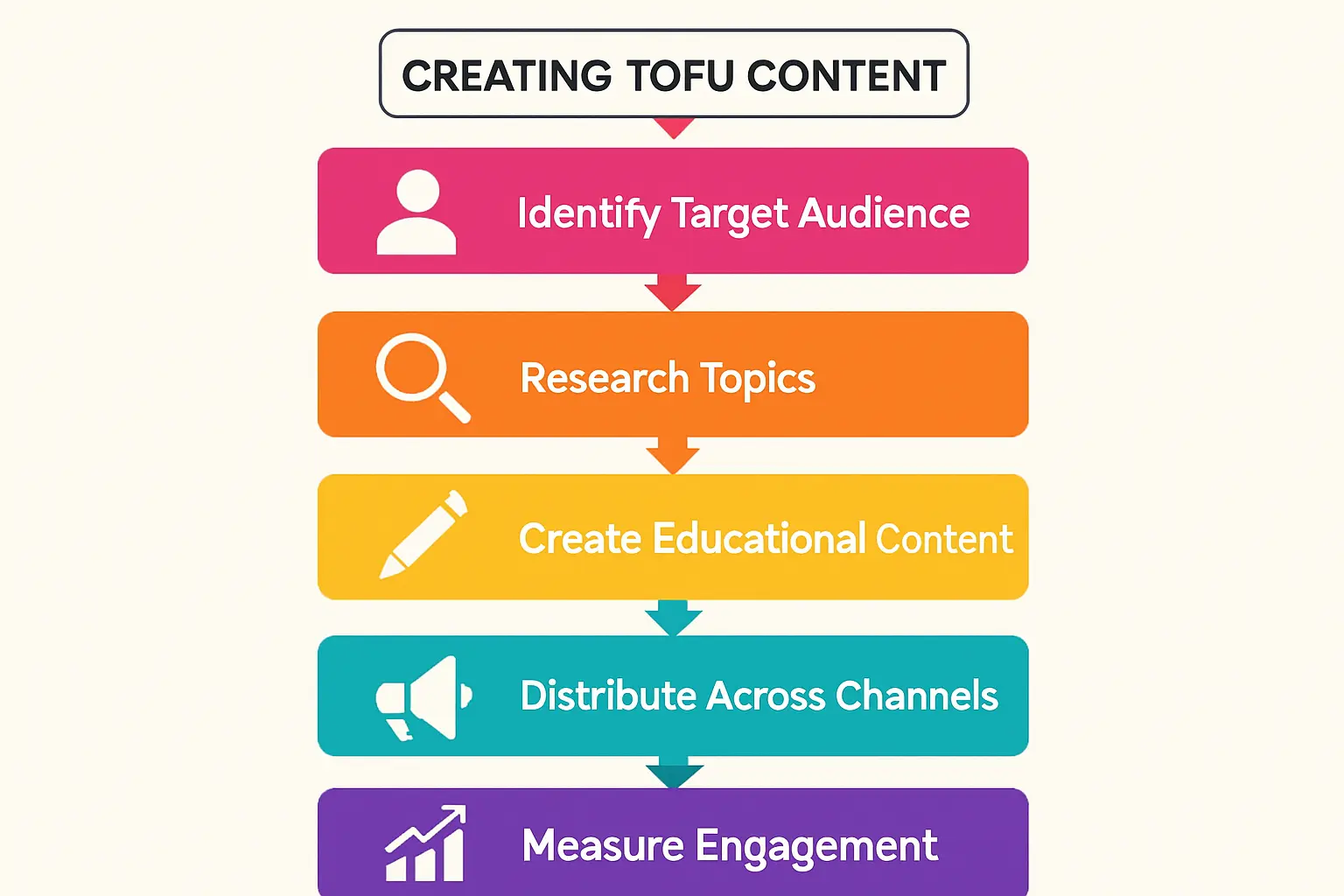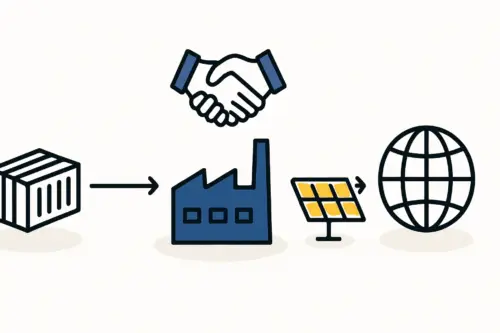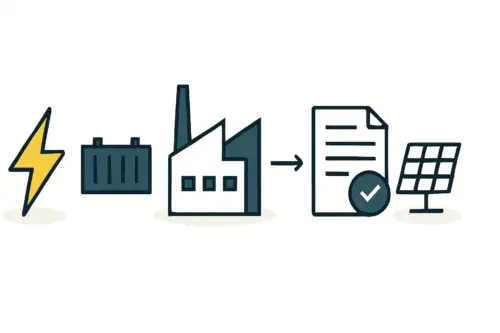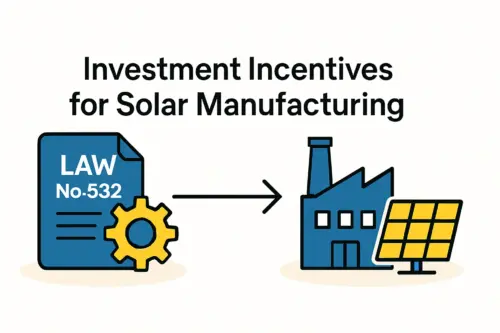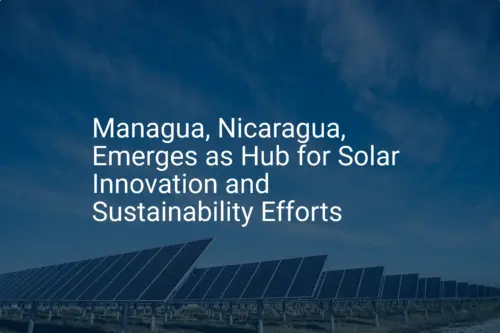A solar module is designed for a service life of 25 to 30 years. In certain environments, however, its performance can degrade significantly in a fraction of that time.
For example, a study of commercial solar installations in Nicaragua revealed power losses of up to 8.6% in just 1.5 years—a degradation rate nearly six times higher than the industry standard. This is no anomaly; it is a direct consequence of a climate that relentlessly tests the limits of solar technology.
For entrepreneurs and investors planning to establish solar module manufacturing in tropical regions, understanding these environmental challenges is the first step toward building a successful, reputable business. This article examines the specific failure mechanisms observed in high-humidity climates and outlines the critical quality control standards needed to produce durable modules built to last.
The Unique Challenge of Tropical Climates
Regions like Central America present a formidable combination of environmental stressors for photovoltaic (PV) modules. The climate is typically characterized by three key factors working in concert:
-
High Ambient Humidity: In Nicaragua, for instance, the average relative humidity is approximately 80%. This persistent moisture constantly seeks to penetrate the layers of a solar module.
-
High Ambient Temperatures: With average temperatures around 27.5°C, the chemical and physical processes that degrade materials accelerate.
-
High Solar Irradiation: Strong and consistent sunlight, while excellent for energy production (5 to 5.5 kWh/m²/day), also brings high levels of ultraviolet (UV) radiation, which breaks down polymers and other materials over time.
The synergy of these three elements—heat, humidity, and UV radiation—creates an environment far more aggressive than the conditions simulated in standard industry certification tests.
Moisture ingress is the primary catalyst for most premature failures under these conditions. When water vapor penetrates a module’s protective layers, it triggers a cascade of destructive chemical reactions, leading to significant performance loss and visible defects.
Ready to make big Profits?
The solar Industry is Booming
WE HELP NEWCOMERS to the solar industry start their own solar module production line. Customers can make BIG PROFITS by selling modules and finding investors, without wasting money and time on things they don't need!
Common Failure Modes in Humid Environments
Based on field research and analysis, several distinct degradation patterns emerge in solar modules deployed in tropical locations. Manufacturers must engineer their products to resist these specific failure modes.
Corrosion: The Silent Performance Killer
The most critical failure mode observed is the corrosion of metallic components. When moisture reaches the electrical contacts within the module, it triggers an electrochemical reaction, corroding the silver-coated copper ribbons (busbars) and the fine metal grid on the solar cells (fingers).
This corrosion is more than just cosmetic; it increases the module’s internal series resistance. As resistance builds, more of the electricity generated by the cells is converted into heat instead of being exported as useful power, leading to a direct and often rapid decline in performance.
Encapsulant Delamination and Discoloration
The encapsulant, typically a polymer like Ethylene Vinyl Acetate (EVA), is the adhesive layer that bonds the solar cells, glass, and backsheet together, protecting the cells from mechanical stress and the environment. In high-heat, high-humidity conditions, the EVA can undergo two forms of degradation:
-
Delamination: The bond between the encapsulant and the glass or backsheet weakens, allowing moisture to penetrate further. This separation can create pathways for accelerated corrosion.
-
Discoloration (Browning): Chemical reactions, accelerated by heat and UV exposure, cause the EVA to turn brown. This discoloration reduces the amount of light reaching the solar cells, directly impacting the module’s power output.
Other Indicators of Moisture Ingress
Other visual signs indicating poor moisture resistance include the formation of bubbles within the laminate and the appearance of ‘snail trails.’ While snail trails are often considered a cosmetic issue, their presence suggests that moisture has interacted with materials inside the module, signaling a potential vulnerability in the long term.
Beyond Standard Certification: A Proactive Approach to Quality Control
Achieving standard certifications like IEC 61215 is a necessary baseline for market entry. However, as field data from Nicaragua shows, they may not be sufficient to guarantee longevity in harsh climates. A forward-thinking manufacturer must implement a more rigorous quality assurance strategy focused on two key areas: material selection and enhanced testing.
Rigorous Material Selection
The defense against moisture begins with the choice of materials. Every component must be selected for its resilience in humid conditions. This includes:
-
Backsheet: Opting for a backsheet with a very low water vapor transmission rate (WVTR) is critical. This material is the primary barrier against moisture ingress from the back of the module.
-
Encapsulant: Using high-grade, hydrolysis-resistant EVA or alternative encapsulants like polyolefin (POE) can significantly improve long-term stability and resistance to browning.
-
Sealants and Adhesives: The edge sealant used to frame the module must create a durable, impermeable barrier to prevent moisture from seeping in around the edges.
Enhanced Testing Protocols
To validate the durability of a module design for a specific climate, manufacturers should implement testing protocols that go beyond the IEC minimums. These ‘accelerated lifetime’ tests subject modules to more severe conditions to better predict long-term performance.
For high-humidity environments, a key test is Damp Heat (DH). While the standard IEC test requires 1000 hours at 85°C and 85% relative humidity (DH1000), more stringent protocols like DH2000 or even DH3000 provide a much higher degree of confidence in the module’s moisture resistance. These enhanced quality control procedures are vital for building a product that will reliably perform for decades.
The Business Case for Climate-Specific Manufacturing
Producing a solar module designed to withstand local environmental conditions is not merely a technical exercise; it is a fundamental business strategy. A manufacturer whose products perform reliably in a challenging climate builds an invaluable reputation for quality and durability. This leads to fewer warranty claims, greater customer trust, and enhanced bankability for projects using their modules.
A well-designed solar module manufacturing process integrates these climate-specific considerations from the beginning—from sourcing raw materials to final product testing. Insights from J.v.G. turnkey projects in similar climates show that an initial investment in superior materials and extended testing protocols yields significant returns by mitigating the risk of widespread field failures and protecting the brand’s reputation.
Frequently Asked Questions
What is EVA and why is it so important?
EVA stands for Ethylene Vinyl Acetate. It is a polymer used as an encapsulating adhesive in most solar modules. Its primary functions are to bond the different layers of the module together, provide electrical insulation, and cushion the solar cells from mechanical shock and vibration. Its durability against heat, humidity, and UV radiation is critical to the module’s long-term performance.
Are standard IEC certifications not enough for my project?
IEC (International Electrotechnical Commission) certifications provide a crucial, internationally recognized baseline for module safety and performance. However, they represent a standardized set of conditions and may not fully capture the severity of specific local climates, such as those with sustained high humidity and high temperatures. For such environments, relying solely on standard certifications can lead to underestimating degradation rates.
How much more does it cost to produce modules for humid climates?
The incremental cost is relatively small compared to the potential cost of warranty claims and reputational damage from premature failures. The primary cost increase stems from using higher-grade materials, such as backsheets with lower permeability or more stable encapsulants like POE. These material costs may add a few percentage points to the total module cost but are a prudent investment in product longevity.
Can these humidity-related issues be repaired in the field?
Generally, no. Degradation mechanisms like busbar corrosion and EVA browning are irreversible chemical processes that occur deep within the module’s laminate. Once performance degradation begins, it cannot be stopped or repaired. The only solution is module replacement, which makes preventative quality control during manufacturing absolutely essential.
A Foundation for Long-Term Success
The solar industry is built on the promise of long-term, reliable energy generation. In tropical climates, fulfilling that promise requires a deeper level of engineering and quality assurance. By understanding the specific environmental stressors and designing products to withstand them, a new manufacturer can differentiate their business, build a reputation for excellence, and establish a foundation for durable success in a demanding market. This focus on climate-specific durability is what transforms a standard solar factory into a regional market leader.


